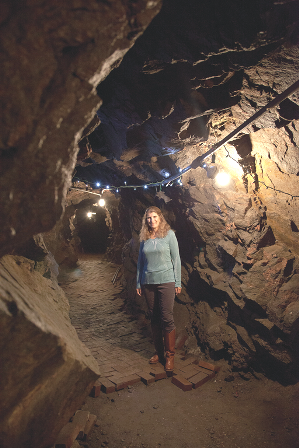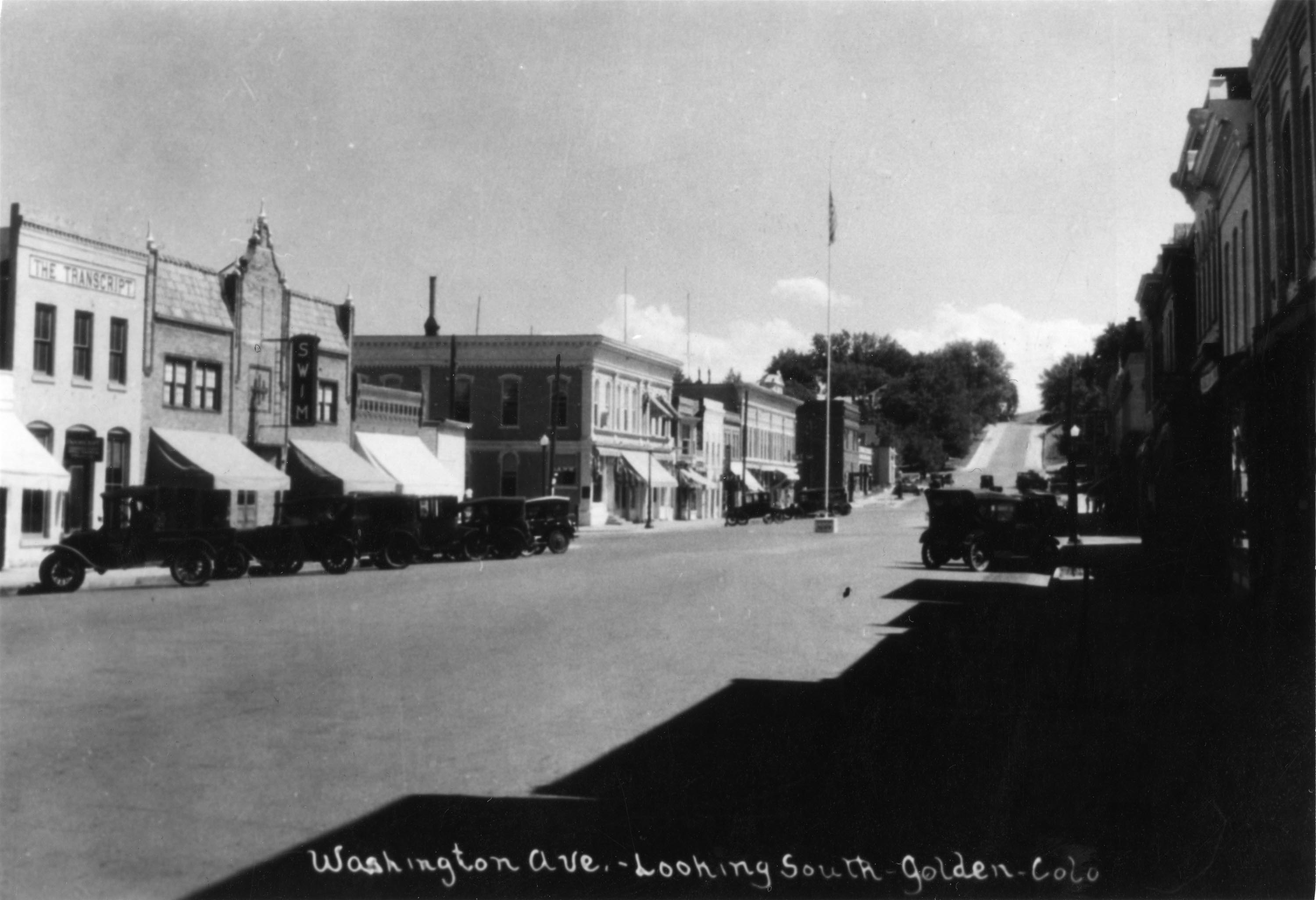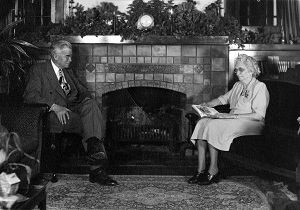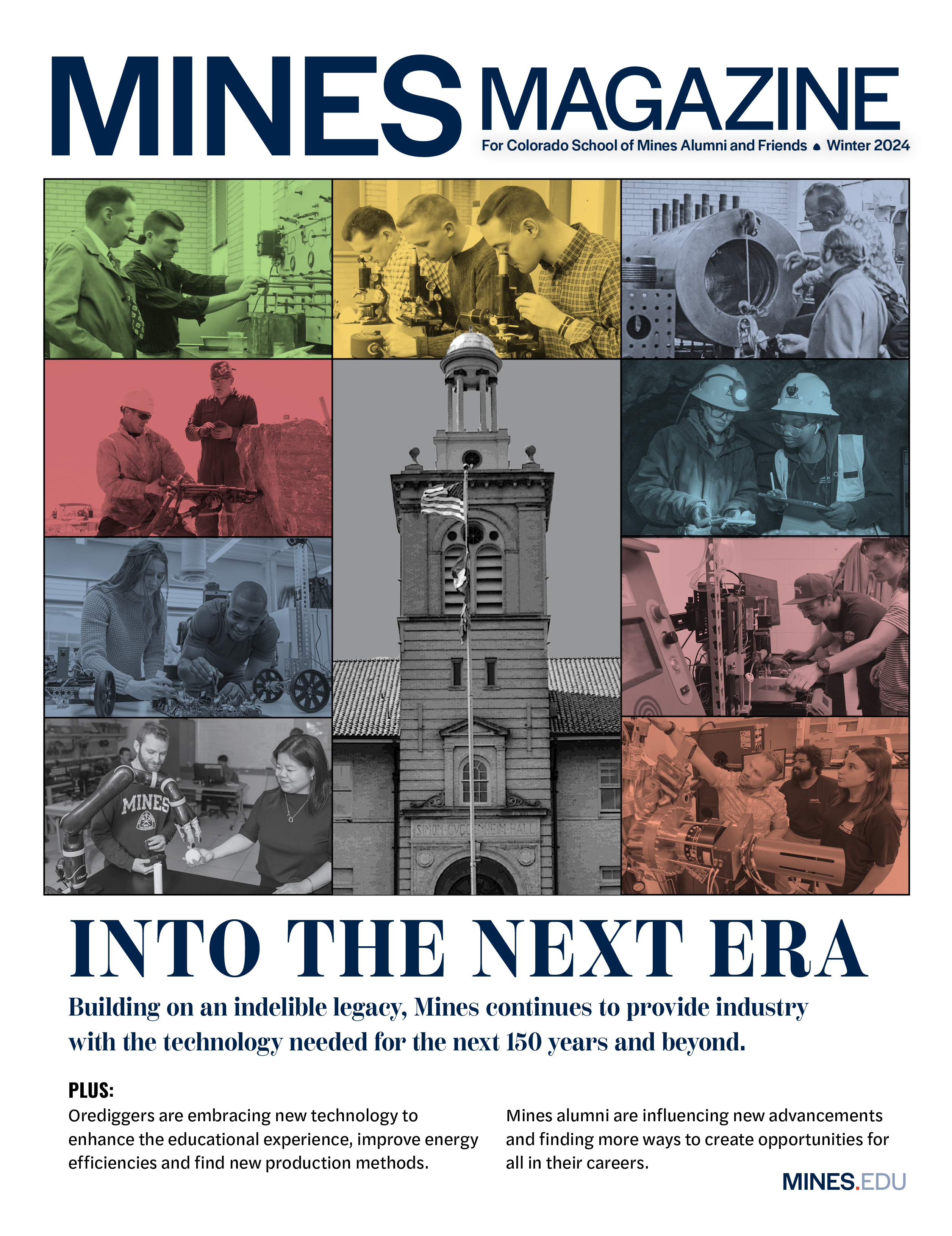Animal Magnetism: How Blaster the Burro Found Love, and a Home, at Mines
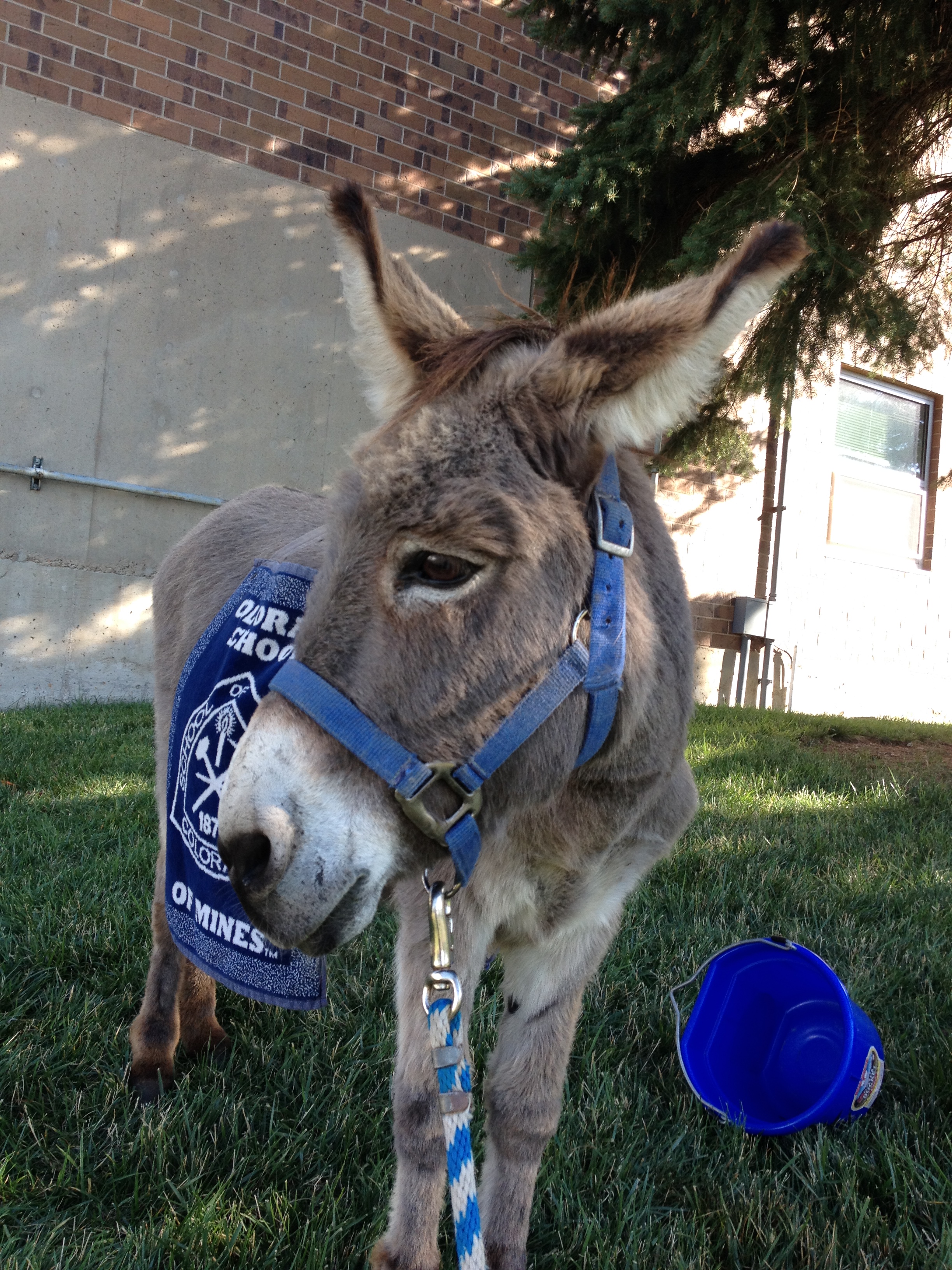
In the United States, the 1960s was a decade of interesting visuals: long-haired hippies driving around in pastel-colored vans, folks streaking through parks, and environmentalists sitting and singing in forested communes.
The small city of Golden, Colorado, was no exception. There, you would have seen a kindly gentleman, Frederick “Heinie” Foss (1917-2015), walking his burro down North Ford Street on his way to Mines football games. Foss was a popular guy in Golden. In fact, he eventually became known as “Mr. Golden” for all of his community service. He worked as a pharmacist and eventually took over his parents’ store, Foss Drug, in 1945.
As a youth, Foss spent a lot of time at Mines; his stepfather, Joe O’Bryne, was a professor and the founder of the “M” on Mt. Zion. Foss came to love the school, and officials even let him audit math and chemistry classes. He ultimately became a member of the Mines Athletic Hall of Fame and the President’s Council, and he was made an honorary colonel in the R.O.T.C. and an honorary member of the Mines Alumni Association.
Foss also loved animals. He raised chickens, cattle, and Arabian horses, and he always had plenty of pet dogs and cats at the Foss ranch on North Ford Street. No one knows for sure why he decided to start taking his burro to football games. “It could have been to compete with CU’s [the University of Colorado at Boulder] mascot, the buffalo called Ralphie,” says Foss’s granddaughter, Sarah Labosky ’08. “I’ve asked family members, and they don’t know the answer.”
Regardless of the reason, Mines students fell fast and hard for the burro, so Foss continued to escort his four-legged companion to football games. Legend has it the burro even traveled by train with the team to away games. In short, he was a shoo-in to become the school’s mascot and to be aptly dubbed “Blaster.”
Many agree that Blaster is the perfect mascot—burros have long been known for their hard work in the mining industry. Eventually, drawings of Blaster included a stick of dynamite in his mouth to solidify the connection to mining and the university’s beginnings.
Marv Kay ’63, Emeritus Professor of Physical Education and Athletics and Mines’ head football coach from 1969 to 1994, calls Blaster a great mascot. “He represents hard work, determination and dedication of the students, and the early ties of the school to the mining industry,” Kay says. “As an alumnus, to see Blaster marching in parades with the band or students, or making the long walk to the Colorado State Capitol during Engineering Days, or at football games makes me very proud.”
Blaster is oblivious to all the history and the adulation, of course, but he’s become an iconic mascot and as popular as any burro could ever hope to be. He has more than 1,000 likes on Facebook, as well as accounts on Twitter (@blasterburro), Pinterest, Flickr, and YouTube.
The Blue Key Honor Society, a group that promotes Mines spirit, took over handling Blaster early on and is now officially in charge of caring for the burro. “When Blaster is on campus, Blue Key members must be in control of him—we call it Blaster Patrol,” says Steph Martella, a junior biochemical engineering major and spirit chair of Blue Key. “We have buckets to give him water and clean up around him, and we like to keep him on grassy areas so he can eat.”
Martella says Blaster attends all home football games (he scampers down the sidelines after touchdowns), Celebration of Mines, the homecoming parade, the Ore Cart Pull during Engineering E-Days, and other smaller events for various school groups. “Everyone who meets him falls in love right away,” says Martella. “He’s also a racing burro, and that makes him perfect for running at football games. He’s more timid and quiet than other burros, so he is very good around children.”
Blue Key has created specific protocols for interacting with Blaster. For example, no one is allowed to ride him (children under 30 pounds may be placed on his back for photos), a space of at least three feet must be maintained behind him, petting is only allowed on his shoulders and forehead, and only Blue Key members are permitted to feed him.
Blue Key leaders say the first Blaster died in the early 1990s at age 33, so Mines is currently on Blaster number two. “We think he’s around 25 years old,” Martella says. “We’re not sure what the average age of a burro is, but they can live to be around 40.”
When Blaster isn’t attending Mines events, he lives at the Laughing Valley Ranch, a spread for domestic animals in Idaho Springs, Colorado. Bill Lee, the ranch’s owner, says Blaster leads a “productive life” and is a “10” on the happiness scale. “I believe when burros have a productive life, they’re a lot happier,” Lee says. “Blaster is domesticated, so he’s not always in a survival mode, and he’s pretty active for his age.” Active is a good description. Blaster runs five or six burro races a year, most of them in the three-mile range, and Lee says he won two of these races in Golden a few years ago.
Compared to most burros, Lee says, Blaster is a bit small, standing about 39 inches tall from his shoulder to the ground—which is about nine inches shorter than the average burro. “I kind of think that’s why he’s such a perfect mascot for Mines,” Lee says. “He’s small and mighty. Mines isn’t a huge school either, but it sure is mighty.”

